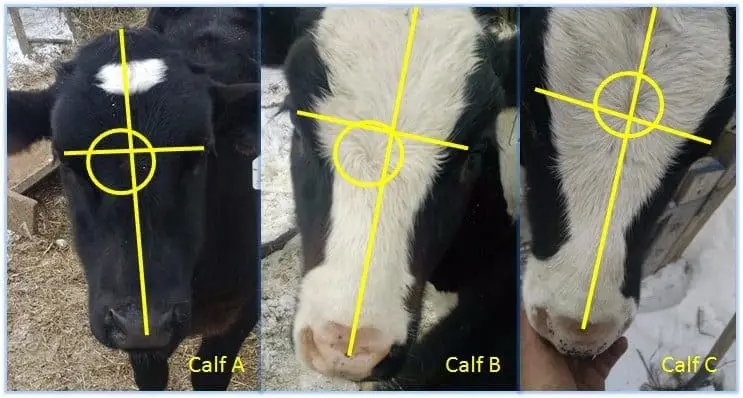We tend to view phrenology and the larger idea of physiognomy as quaint curiosities, worn out ancient concepts akin to geocentrism or flat-earth theories. But evidence keeps cropping up that there might be something to it after all, at least for livestock. The original reasoning behind physiognomy is totally insupportable, but there is a body of evidence that suggests that physical appearance can be correlated with behavior and temperament.
The ancients liked to use physiognomy to characterize humans, but contemporary science best supports the use of physiognomy to characterize animals. That makes some sense, since wild animal breeding is based on natural selection criteria and domesticated livestock breeding – at least when the breeder is doing things correctly – is based on phenotypical selection. Humans and, ahem, even livestock breeders, tend to use less sound criteria in selecting mates.
While it might seem easy to dismiss as folklore, there are some physical characteristics of cattle that give indications about their temperament. One such trait is the facial hair whorl. Most cattle have a whorl on their face; some have none, some have more than one. Statistically, an animal with a whorl high on the face is more likely to be flighty whereas a midline or lower whorl indicates a calm disposition. Animals accustomed to a person might not display the same degree of temperament problems, but the presence of a high facial whorl becomes a bigger factor when cattle encounter an unknown person.

We have been raising four calves this winter with plans to sell three of them at auction as feeders in the spring. We’ll keep and raise the best one for ourselves. When we evaluate which calves will be offered for sale we evaluate them on several criteria. Of course we are concerned about growth, health, and conformation, but temperament is certainly an important consideration. So here’s the weird thing: calves A and C are in a close tie for best growth, health, and conformation in this group. But calf C is by far the calmest and friendliest calf in the group, even though hair whorl patterns would indicate the opposite should be true. They are all purebred Holsteins, from the same farm, from the same long-standing breeding program. It would have been nice to have the theory match reality.
The point to be made is that although judging cattle by hair whorl is probably statistically valid (and it is certainly more valid than using whorl patterns in humans to predict handedness or homosexuality), there are always a number of individuals that deviate from the mean. Judging by whorl pattern might be good as a general rule, but biological systems are complicated things that almost never can be entirely characterized by simple rules of thumb. We’ll always need to make wide allowances for exceptions.
Note: Besides facial hair whorls, some cattle experts evaluate cattle with a wide array of physical observations, including hair whorls along the flank, neck length, head/neck posture, hair coat length, and various proportional measurements. None of these are as well supported as facial whorls, so I can’t say that they are equally valid. A good place to start reading on this topic is Reproduction and Animal Health. Like the majority of the for-farmers/by-farmers books out there it isn’t well-written, but it is full of provocative ideas. I wish I could find a resource for comparable physiognomic markers for pigs, but I don’t think anything exists. Even the Canadian Prairie Swine Centre’s website only references research on cattle traits for this topic. So we’re on our own for the pigs.
